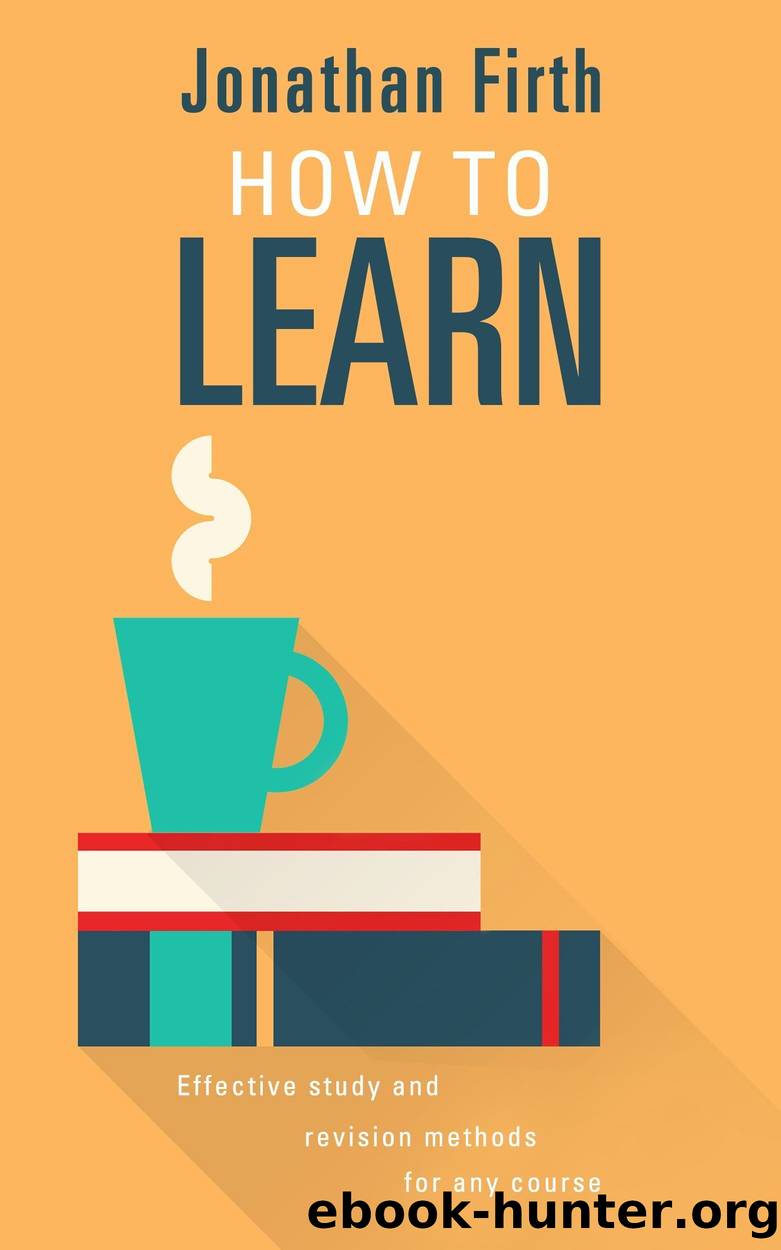How to Learn by Jonathan Firth

Author:Jonathan Firth [Jonathan Firth]
Language: eng
Format: epub
Publisher: Arboretum Books
Published: 2019-03-06T00:00:00+00:00
Spacing
A key weapon in the battle to learn more effectively is the spacing effect. This has nothing to do with physical spaceâit is where information is spaced out over time, with practice occurring minutes, days or even weeks after an initial study session. Itâs very important to understand that the effect applies to all types of learning, regardless of the subject or topic (and has even been demonstrated in animals).
It no doubt seems a little counterintuitive to suggest that you should wait longer until restudying something. It seems to run against common beliefs, such as âstrike while the iron is hotâ. Whatâs more, if we wait longer, wonât we be more likely to have forgotten the information? This is actually true. However, by waiting until the information is less well remembered, the later study session has more of a benefit. Itâs rather like waiting to paint a second coat of paint on a wallâthereâs no point in starting until the previous coat has dried.
A useful exploration of the spacing effect by psychologist Melody Wiseheart used flashcards to present learners with 32 obscure trivia questions, along the lines of âwhat European nation consumes the most spicy Mexican food?â (the answer was Norway!). After an initial study session, learners were given a chance to restudy the information a number of days laterâsometimes the gap between study and restudy was as long as 3.5 months. For others, restudy took place after just a few minutes. In total, hundreds of learners took part in the research.
Later (sometimes as much as a year later), the participants were tested. These timescales are very relevant to school and college learning, where you may well study something in September and be tested on it in May, for example. Findings showed that in general, the benefits of a delay between study and restudy increased up until a point, after which they started to decline again.20 For a test that took place a year later, a gap between study and restudy of around 20 days was best, though this âoptimalâ gap was shorter if the test took place sooner after the second study session. In other words, the longer you want to remember something, the more valuable it is to space study sessions out further apart. However the researchers stated, âalthough there are costs to using a gap that is longer than the optimal value, these costs are much smaller than the costs of using too short a gapâ (p. 1101). In other words, it is always wasteful and inefficient to study something again too soon.
In practical terms, itâs worth noting that the original study session had involved learners practicing until they got all of the flashcards right, and then stopping (in other words, mastery had been achieved but there was no overlearningâsee Chapter 2). Spacing is unlikely to be helpful if mastery has not been achievedâinstead, learning on a topic should continue until you have fully mastered the material. This will depend on you, as well as on the difficulty of the topic you are studying.
Download
This site does not store any files on its server. We only index and link to content provided by other sites. Please contact the content providers to delete copyright contents if any and email us, we'll remove relevant links or contents immediately.
American History Stories, Volume III (Yesterday's Classics) by Pratt Mara L(5136)
Paper Towns by Green John(4800)
The Giant and How He Humbugged America by Jim Murphy(3288)
The Science Book (Big Ideas Simply Explained) by DK(3135)
The President Has Been Shot!": The Assassination of John F. Kennedy by Swanson James L(2972)
Eleanor & Park by Rainbow Rowell(2943)
The Rape Of Nanking by Iris Chang(2650)
Merriam-Webster's Collegiate Thesaurus, Second Edition by Merriam-Webster Inc(2600)
Harry Potter and the Deathly Hallows (7) by J.K. Rowling(2550)
Ancient Worlds by Michael Scott(2493)
Eligible by Curtis Sittenfeld(2492)
Beautiful Oblivion by Jamie McGuire(2471)
Dork Diaries 12 by Rachel Renée Russell(2269)
Sharp Objects by Gillian Flynn(2155)
The Unlikely Pilgrimage of Harold Fry by Rachel Joyce(2136)
Frankly, Frannie by AJ Stern(2094)
The Astronomy Book by DK(2053)
Forensics by Val McDermid(1977)
Who Was Louis Braille? by Margaret Frith(1883)
